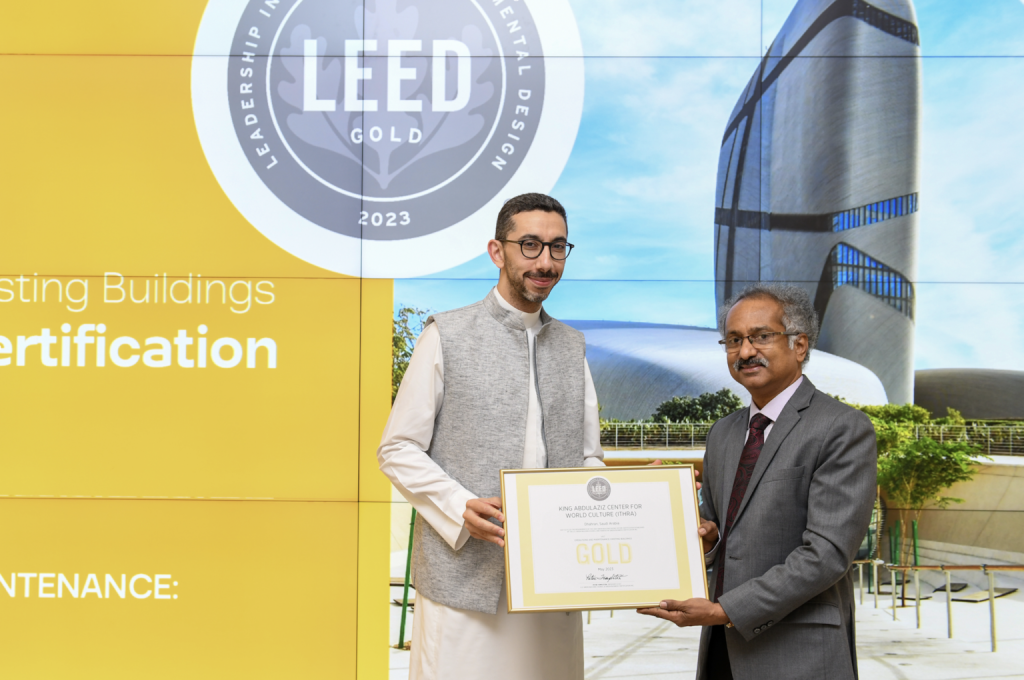The King Abdulaziz Center for World Culture (Ithra) has achieved the Leadership in Energy and Environmental Design (LEED) gold certification in the category for Existing Buildings: Operations & Maintenance (EBOM).
Presented by the US Green Building Council (USGBC), LEED is the most widely used green building rating system in the world, and a globally recognized symbol of sustainability achievement and leadership. The LEED v4.1 O+M Existing Buildings rating system helps building operators maximise operational efficiency and minimise environmental impact. The award follows a three-year process of Ithra monitoring and improving the Center’s performance on metrics including water efficiency, energy and atmosphere, indoor environmental quality, and innovation in operations.
Adnan A. Simsim, Technical Services Manager at Ithra, said: “Maintaining Ithra’s building presents a unique opportunity, especially with the high ceilings and open spaces that are present in the museum, library and common connecting space, the Plaza. To achieve this level of energy efficiency in comparison to other buildings is quite a remarkable achievement. We are not stopping here; this is just the beginning as we continue to innovate in ways to be more operationally efficient in the resources we utilize while offering service to the public.”
According to Ithra, its operational team optimised electromechanical equipment and lighting operations based on occupancy patterns to achieve 18 percent lower energy consumption than the LEED baseline based on national average. Potable water use was optimised to user touch areas, resulting in levels 60 percent lower than the baseline, while the Center also recycles or diverts 80 percent of all solid waste generated, including food waste from the restaurants. Furthermore, Ithra harvested rainwater, enhanced indoor air quality and promoted green education through visitor-facing displays to demonstrate its commitment to sustainability and achieve the USGBC targets.
The certification recognises Ithra’s commitment to being an environmentally responsible and sustainable cultural institution. The Center was also previously certified gold in LEED NC (New Construction) when it was first constructed.




